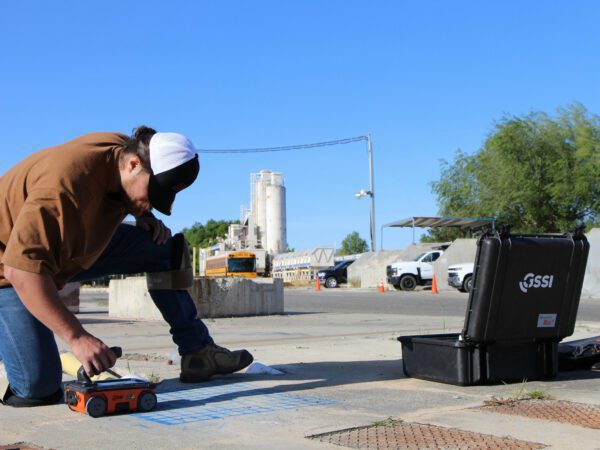RainierGPR Service Areas: Comprehensive Protection for Concrete Scanning
RainierGPR Service Areas: Comprehensive Protection for Concrete Scanning
Blog Article
Concrete Scanning: A Crucial Step Towards Ensuring Architectural Integrity and Security
In the realm of building and framework maintenance, the significance of concrete scanning can not be overstated. By using innovative technology and methods, concrete scanning serves as a crucial device in making sure that the integrity and security of bridges and buildings are upheld to the highest possible criteria.
Value of Concrete Scanning
Concrete scanning plays an essential duty in making sure the architectural integrity and safety of buildings and facilities tasks. By making use of sophisticated technologies such as ground-penetrating radar (GPR) and electromagnetic induction, experts can non-destructively check concrete structures to spot potential issues, gaps, ingrained items, and support format. This process enables early discovery of abnormalities that might jeopardize the security of a structure, protecting against expensive damages and ensuring the safety of occupants.
Prior to boring, reducing, or coring into concrete, scanning assists identify the precise places of rebar, post-tension cords, and other ingrained aspects, reducing the risk of unintended hits that can lead to structural weaknesses. Furthermore, concrete scanning aids in top quality control by confirming the density of concrete covers and discovering any discrepancies that might influence the overall sturdiness of the structure.
Innovation for Concrete Evaluation

Benefits of Very Early Discovery
Prompt discovery of structural issues can substantially alleviate risks and ensure the long life of building and construction jobs. By recognizing prospective problems beforehand in the construction process, stakeholders can take proactive steps to deal with problems before they rise into bigger and a lot more pricey problems. Among the key advantages of very early detection is the avoidance of structural failures, which can present serious security risks and lead to project delays and monetary losses.
Furthermore, very early discovery enables timely repair services and upkeep, which can aid prolong the life-span of the framework. By dealing with problems quickly, building and construction groups can prevent pricey repair work or perhaps the demand for premature replacement of structural parts. This positive approach not just saves time and money however likewise boosts the overall safety and security and toughness of the building project.
Additionally, very early discovery can enhance task preparation and decision-making by providing stakeholders with valuable understandings right into the condition of the structure. Equipped with this details, task managers can make enlightened options pertaining to building and construction timelines, materials, and methods, bring about extra efficient and effective task results.
Making Certain Structural Stability
Guaranteeing the architectural security of imp source a construction job is paramount to its safety and longevity. Concrete scanning plays an important duty in ensuring architectural stability by discovering possible issues such as gaps, delamination, or support rust that could compromise the honesty of the structure over time.
By using innovative scanning technologies like ground-penetrating radar (GPR) and electro-magnetic induction, construction experts can non-invasively inspect concrete structures to determine locations of concern beneath the surface area. This positive method permits for the very early detection of weaknesses or issues, allowing timely repair work or reinforcement to avoid structural failings.
Regular concrete scanning throughout different building and construction stages and throughout the life process of a structure can help keep its stability, reduce threats, and guarantee the security of passengers. By focusing on structural stability with concrete scanning, building jobs can improve their resilience and toughness, ultimately adding to higher safety and security and durability.

Preventing Vital Failings
Carrying out routine evaluations, such as concrete scanning, can reveal surprise flaws like voids, cracks, or deterioration that can jeopardize the integrity of a framework. By making use of advanced scanning innovations like Ground Passing through Radar (GPR) or Concrete X-ray, designers can non-destructively examine the problem of concrete and identify weak points that require support or repair work.

Conclusion
Finally, concrete scanning plays a critical duty in read this post here making sure structural integrity and safety and security by using innovative innovation for very early discovery of potential problems. This positive technique aids protect against essential failures and makes sure the stability of frameworks. It is necessary to focus on concrete inspection as a typical method to safeguard the longevity and safety and security of structures and infrastructure.
Concrete scanning plays a critical role in making certain the structural stability and security of buildings and infrastructure jobs. Furthermore, concrete scanning help in quality control by confirming the density of concrete covers and detecting any type of discrepancies that may impact the general sturdiness of the framework. Concrete scanning plays an essential role in making certain architectural stability by finding potential issues such as gaps, delamination, or support deterioration that might jeopardize the integrity of the framework over time.
In final thought, concrete scanning plays a vital duty in making certain architectural stability and safety by utilizing advanced technology for early discovery of prospective issues.
Report this page